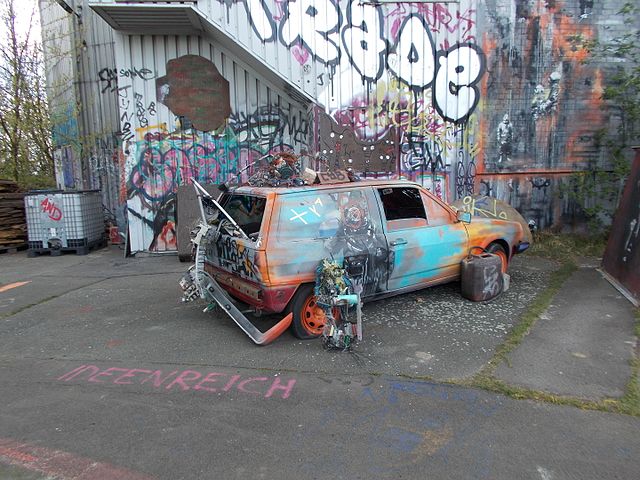Teufelsberg is an artificial mountain located in the district of Grunewald, West Berlin, Germany. At a height of 260 feet, it’s the highest location in Berlin. When translated, its name means “Devil’s Mountain,” and it was named after Teufelssee – the Devil’s Lake – which lies to the south.
Urbanizing the area near Grunewald Forest

Before the creation of Teufelsberg, the area offered visitors the natural beauty of the Grunewald Forest, and even when Berlin grew substantially, this part of Germany wasn’t built upon.
In 1933, the National Socialist German Workers’ Party came into power and developed a plan for the city’s reorganization. Construction of a huge military institute known as the Wehrtechnische Fakultät began, but had to be abandoned when the Second World War broke out.
During the conflict, the institute was bombed and half destroyed. Following its conclusion, it was decided that the remnants of the structure would be blown up and the area used as a dumping site for the rubble and ruins of Berlin during the city’s cleanup.
Rubble continued to build up

Construction debris and fragments of houses that were destroyed during World War II were piled up and left on the hill over the subsequent years. By 1972, some 26 million cubic meters of rubble had been collected at the site. Such waste included reinforced concrete slabs, fragments of 15,000 homes and a large number of bricks.
That same year, the hill became a nature reserve after it was covered with sand and earth, and around a million trees and shrubs were planted. For lovers of winter sports, ski jumps and lifts were built in 1955. These were used until 1969,
Becoming a listening station

During the Cold War, tests were carried out throughout West Berlin to find the ideal location for a US National Security Agency (NSA) listening station to intercept Soviet radio communications. These revealed that Teufelsberg was the perfect spot.
The design of the station consisted of white towers, buildings and domes. In 1963, its construction was completed. Up until 2020, what happened inside was classified. However, it appears that various communications continued until 1989. After the Fall of the Berlin Wall, it was closed, having lost most of its equipment.
What’s Teufelsberg like today?

After the Cold War, attempts were made to erect a complex of apartments, restaurants and hotels on Teufelsberg. The idea of building a university was also proposed. However, the authorities declared the site a natural environment and banned any construction, and it’s since fallen under private ownership.
Teufelsberg has become popular with tourists, and it’s been used as a set for the filming of movies, television shows and music videos. It’s also become a haven for graffiti artists and creative youths.
More from us: RMS Mauretania (1906): The Fastest and Largest Ocean Liner of Her Day
On October 30, 2018, Teufelsberg was included in the list of historical monuments of the city of Berlin. While the listening station is officially closed and the inside is considered unsafe, semi-legal two-hour excursions are conducted around the site. Even from afar, one can see the distinctive ruins of the tower and its round domes.
